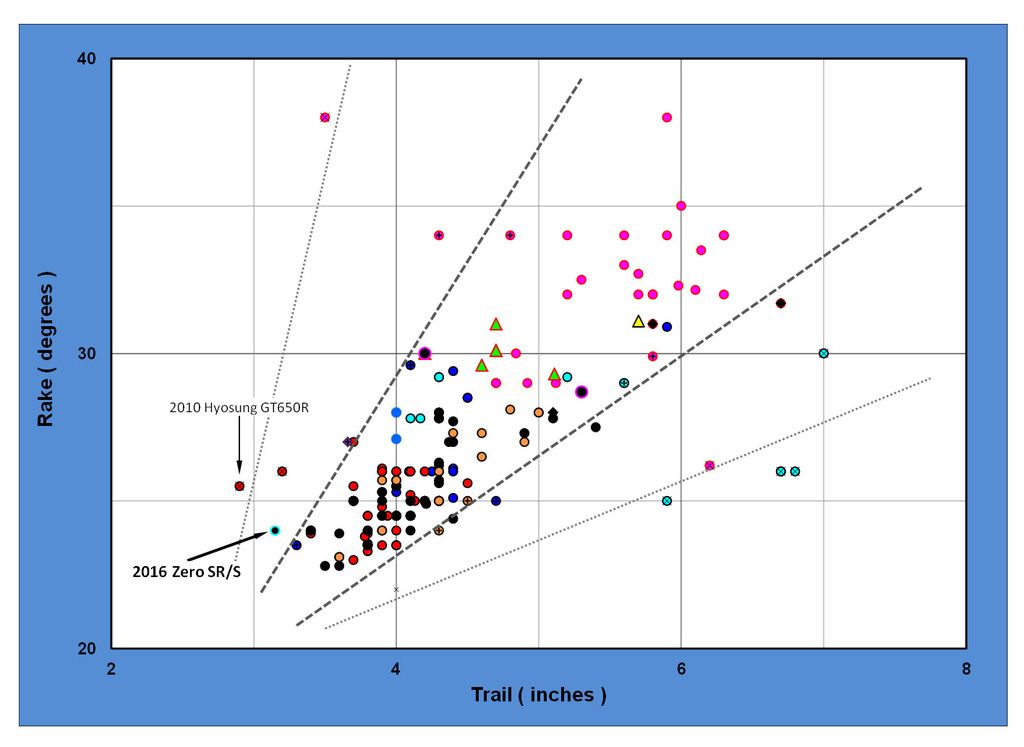I do not have a Zero yet (perhaps in a year or so) but am studying the bike and like what I see. Zero is doing an awesome job with design and manufacturing. They are also putting in some really quality hardware, especially suspension and braking to go along with what they are doing in the power department.
I like this new thread because someone out there is also looking at the geometry and asking a good question. I don't know if I can answer the question, but thought I'd post some graphics from data I kept from another bike project (CB700sc) involving common bike metrics.
Pic 1. Rake vs Trail. A somewhat tight "V" design relationship. Zero S/SR is the black dot with cyan ring. I consider the Zero a naked bike (black dots). The sport bikes are the red dots and the cruisers are the magenta dots way out there. I would say Zero is in the V, but the low trail number makes it stand out.

Pic 2. Wheelbase vs. Weight. The tightest "V" design relationship I found; Zero picked a safe spot for the S/SR but low down the V.

Pic 3. Trail vs. Weight. A loose V design relationship and Zero S/SR is a bit of an outlyer because of the low trail but it still is in the V.

Pic 4. Rake vs. Weight. Another loose V and Zero S/SR is low in the V but in the middle.

Pic 5. Trail vs. Wheelbase. A "//" design boundary relationship(?). Here the trail number doesn't stand out but looks like it is in the middle. That said, the other manufactures seem to like the left side boundary.

Pic 6. Rake vs. Wheelbase. Like pic 5 above, Zero S/SR is safely in the middle.

So yes, the trail numbers are low, but not out of the norm. The Zero numbers show they designed the bikes to be agile performers and they have given them quality components and a drivetrain that can really make the bike a great riding machine.
You guys indicate the Zero has a low CG, but my visual inspection suggest the heavy batteries are high up in the bike, so I really wonder how "low the CG is on the bike. What I would suggest on the bike is that it has has a tighter CG, that is it has a lower polar moment of inertia design, so the rake and trail numbers could reduced to take advantage if this design aspect to produce a nimble machine.
As a side note, the 2011 S had a rake and trail of 22.7 degrees and 2.8 inches - MUCH smaller than the 2015 Zero S/SR. They got away with these tiny numbers because it had less battery mass (even tighter CG / low polar moment of inertia).
If the tighter mass is an advantage to the electric bike, I would guess as power improves, it will overcome the gas powered bike in [short] races because it can out handle the gas bike.
Just a thought,
Jerry


 Author
Topic: Why is trail measurement on Zero bikes so low? (Read 1042 times)
Author
Topic: Why is trail measurement on Zero bikes so low? (Read 1042 times)
